第4章
If it is divisible through and through, and if this division is possible, then it might be, at one and the same moment, divided through and through, even though the dividings had not been effected simultaneously: and the actual occurrence of this result would involve no impossibility. Hence the same principle will apply whenever a body is by nature divisible through and through, whether by bisection, or generally by any method whatever: nothing impossible will have resulted if it has actually been divided-not even if it has been divided into innumerable parts, themselves divided innumerable times. Nothing impossible will have resulted, though perhaps nobody in fact could so divide it.
Since, therefore, the be dy is divisible through and through, let it have been divided. What, then, will remain? A magnitude? No: that is impossible, since then there will be something not divided, whereas ex hypothesis the body was divisible through and through. But if it be admitted that neither a body nor a magnitude will remain, and yet division is to take place, the constituents of the body will either be points (i.e. without magnitude) or absolutely nothing. If its constituents are nothings, then it might both come-to-be out of nothings and exist as a composite of nothings: and thus presumably the whole body will be nothing but an appearance. But if it consists of points, a similar absurdity will result: it will not possess any magnitude. For when the points were in contact and coincided to form a single magnitude, they did not make the whole any bigger (since, when the body was divided into two or more parts, the whole was not a bit smaller or bigger than it was before the division): hence, even if all the points be put together, they will not make any magnitude.
But suppose that, as the body is being divided, a minute section-a piece of sawdust, as it were-is extracted, and that in this sense-a body 'comes away' from the magnitude, evading the division. Even then the same argument applies. For in what sense is that section divisible? But if what 'came away' was not a body but a separable form or quality, and if the magnitude is 'points or contacts thus qualified': it is paradoxical that a magnitude should consist of elements, which are not magnitudes. Moreover, where will the points be? And are they motionless or moving? And every contact is always a contact of two somethings, i.e. there is always something besides the contact or the division or the point.
These, then, are the difficulties resulting from the supposition that any and every body, whatever its size, is divisible through and through. There is, besides, this further consideration. If, having divided a piece of wood or anything else, I put it together, it is again equal to what it was, and is one. Clearly this is so, whatever the point at which I cut the wood. The wood, therefore, has been divided potentially through and through. What, then, is there in the wood besides the division? For even if we suppose there is some quality, yet how is the wood dissolved into such constituents and how does it come-to-be out of them? Or how are such constituents separated so as to exist apart from one another? Since, therefore, it is impossible for magnitudes to consist of contacts or points, there must be indivisible bodies and magnitudes. Yet, if we do postulate the latter, we are confronted with equally impossible consequences, which we have examined in other works.' But we must try to disentangle these perplexities, and must therefore formulate the whole problem over again.